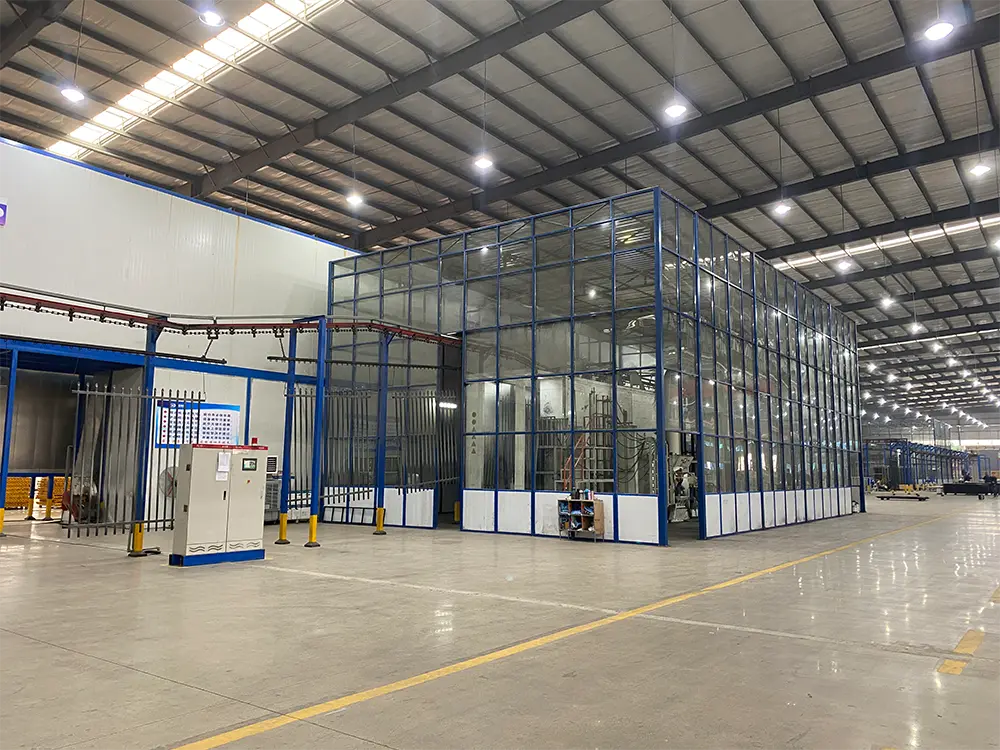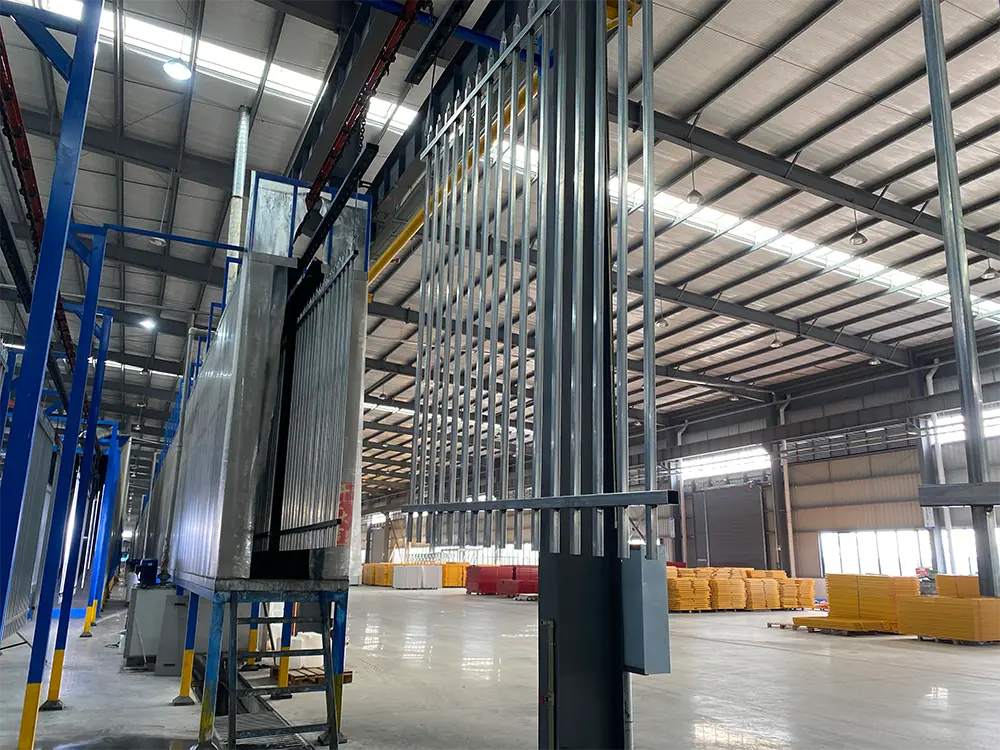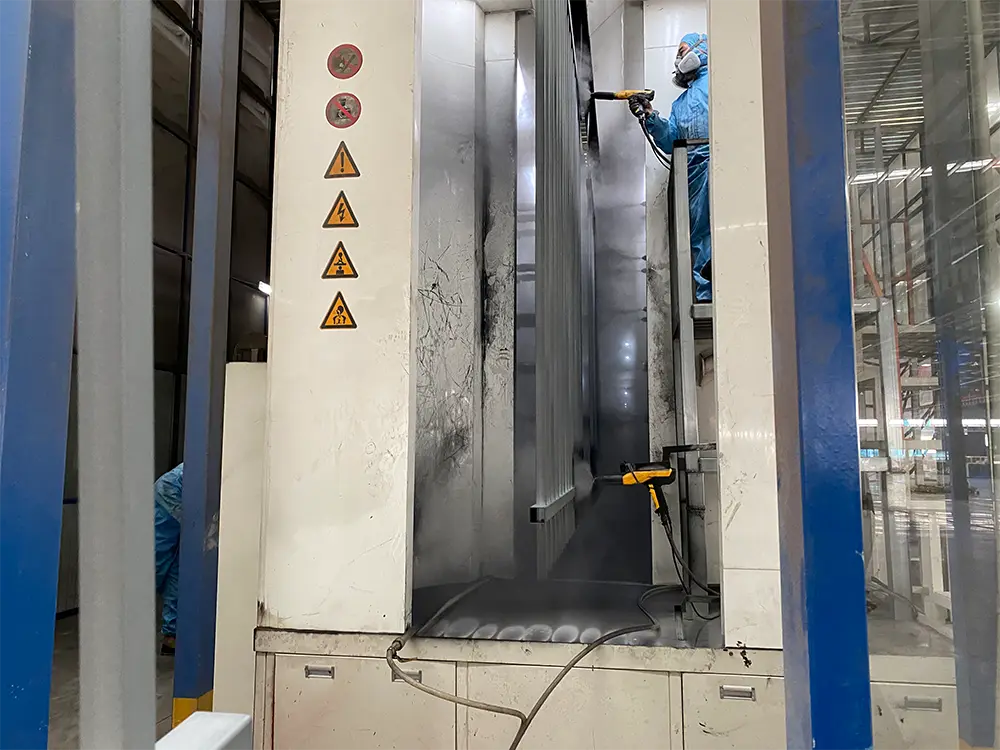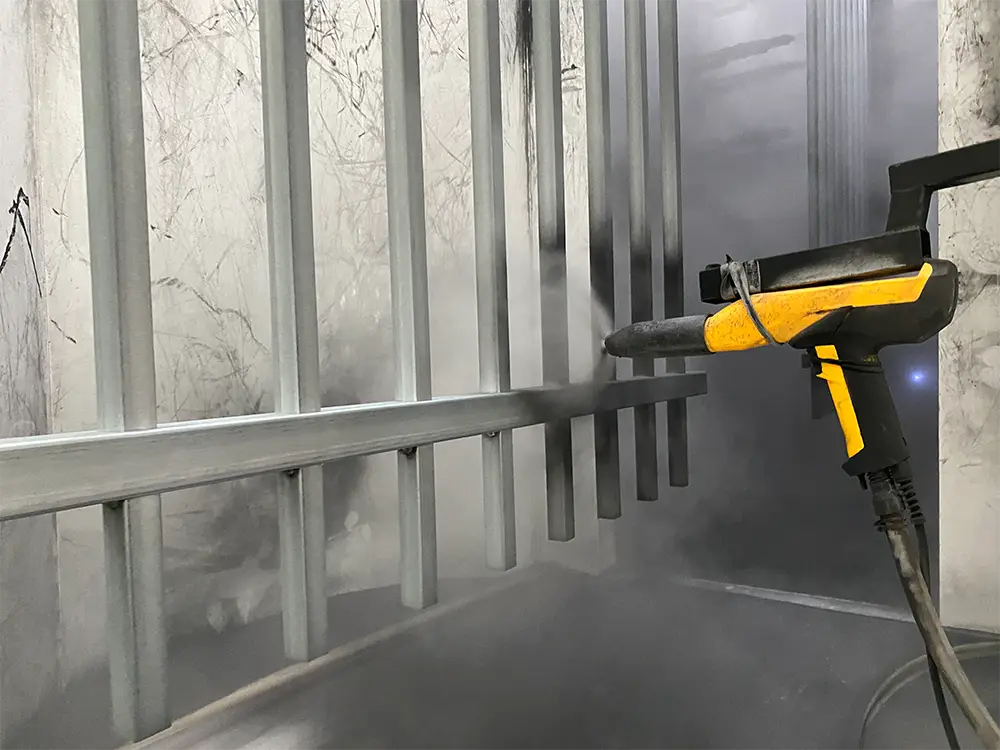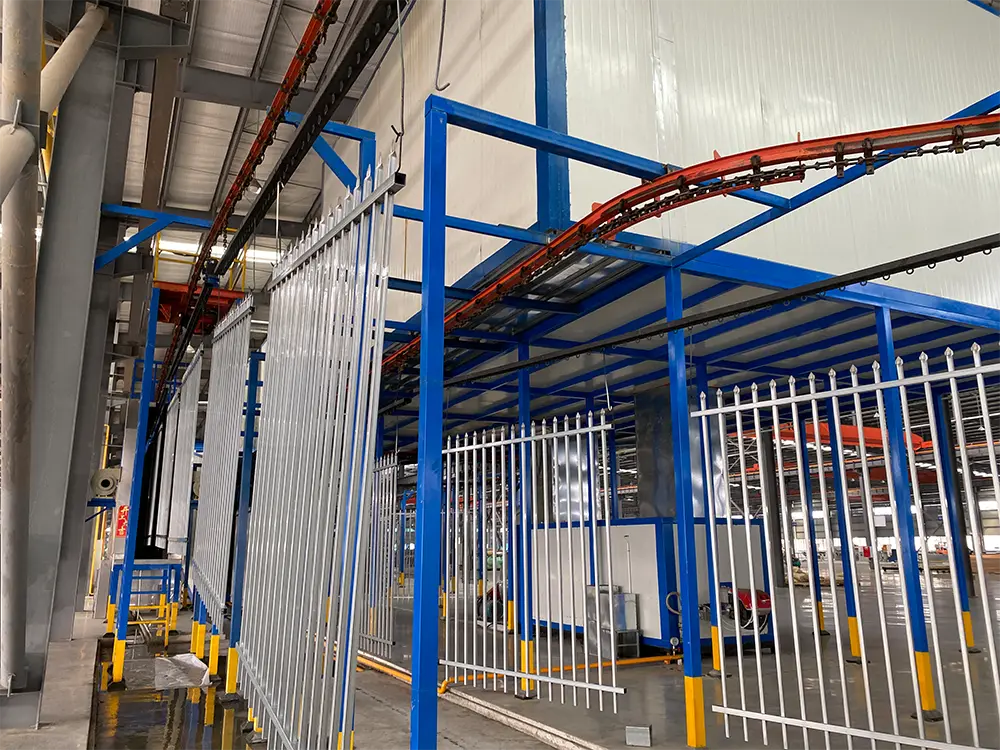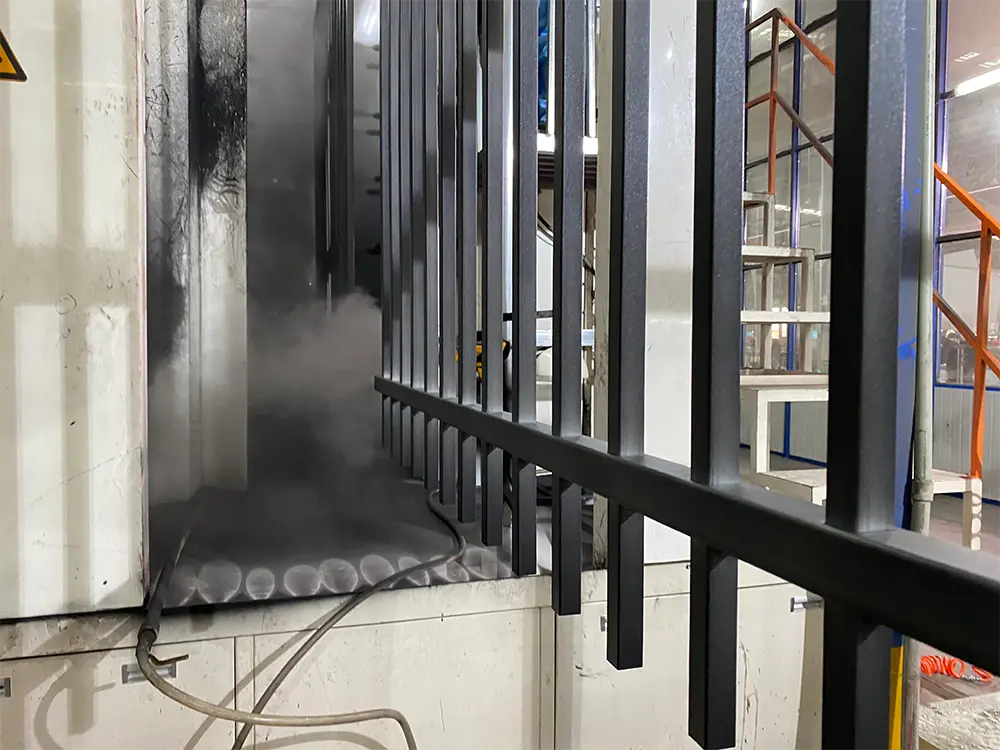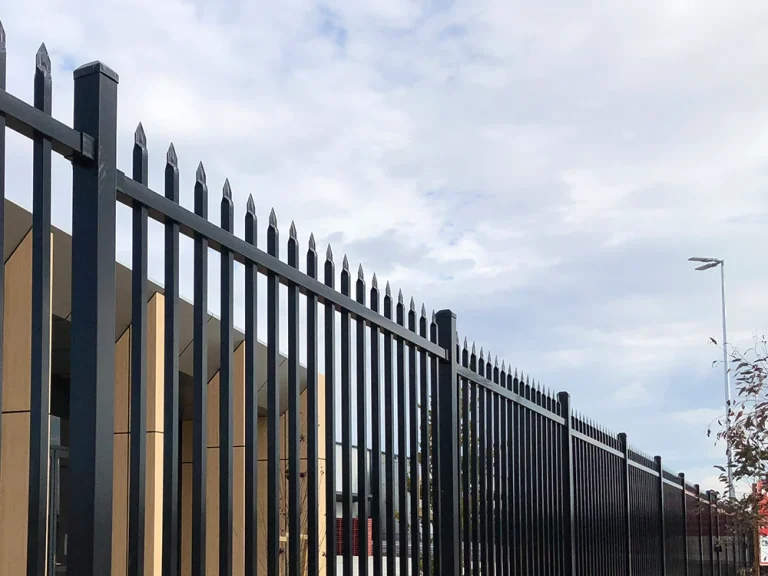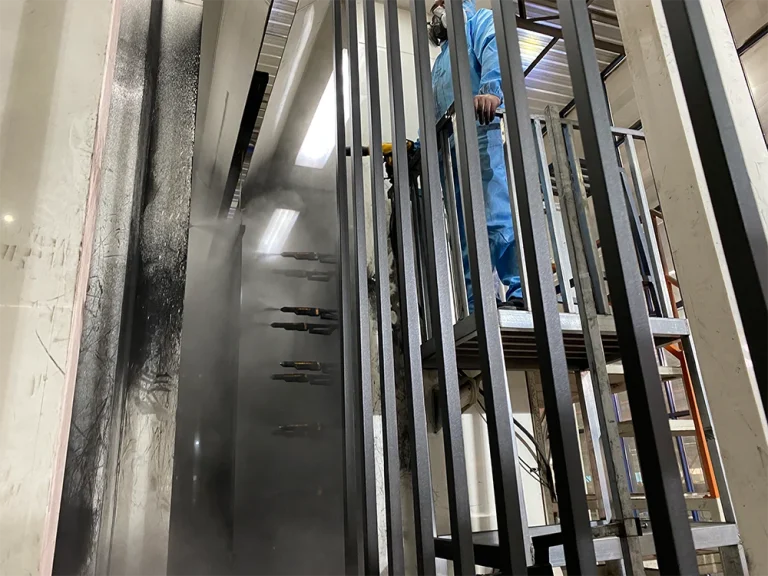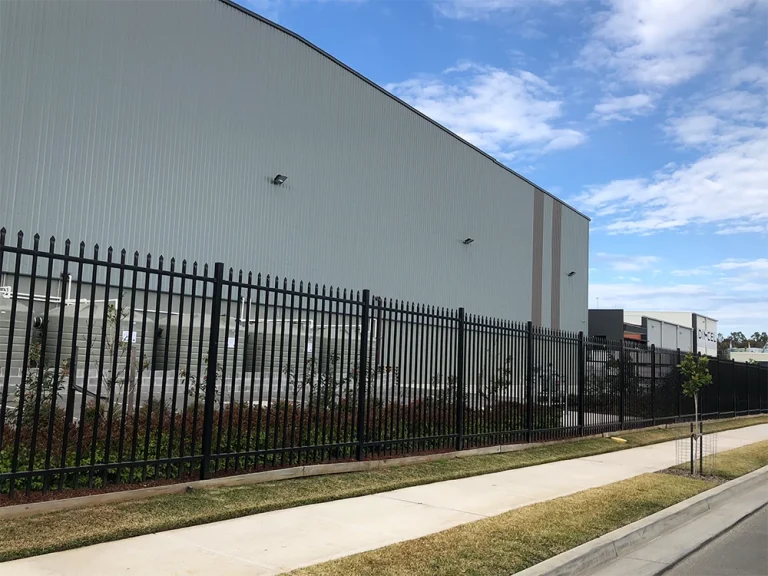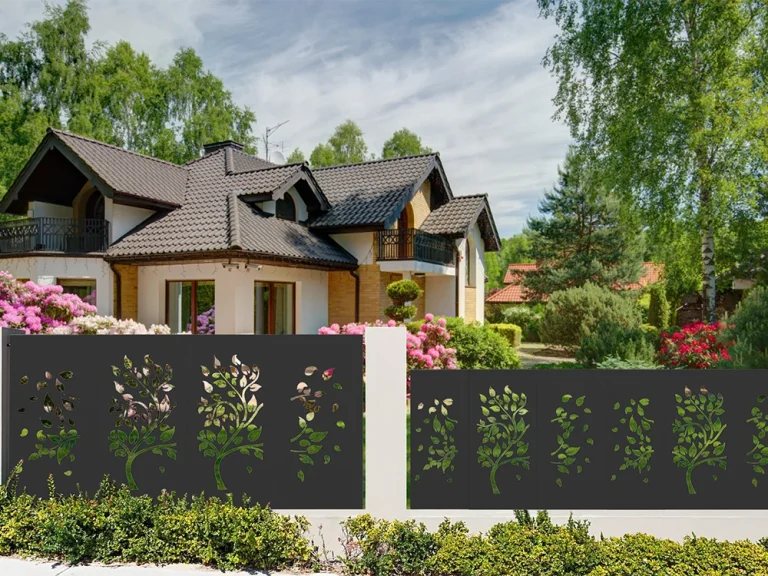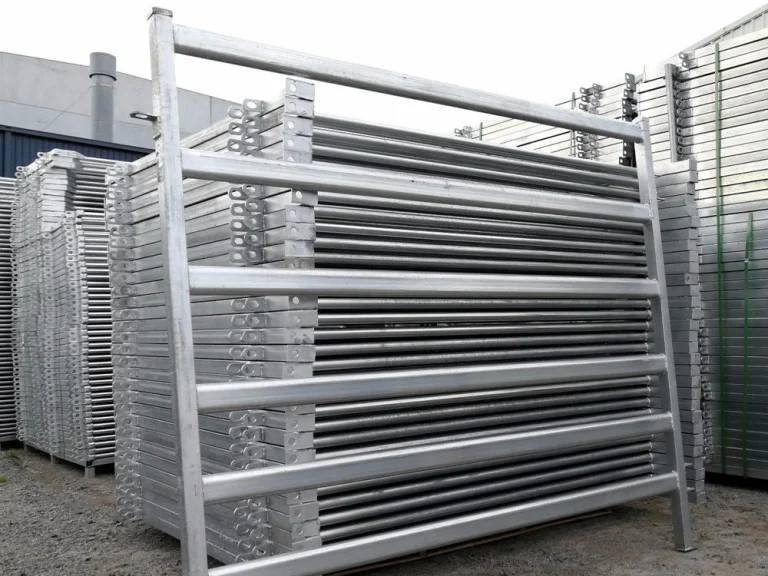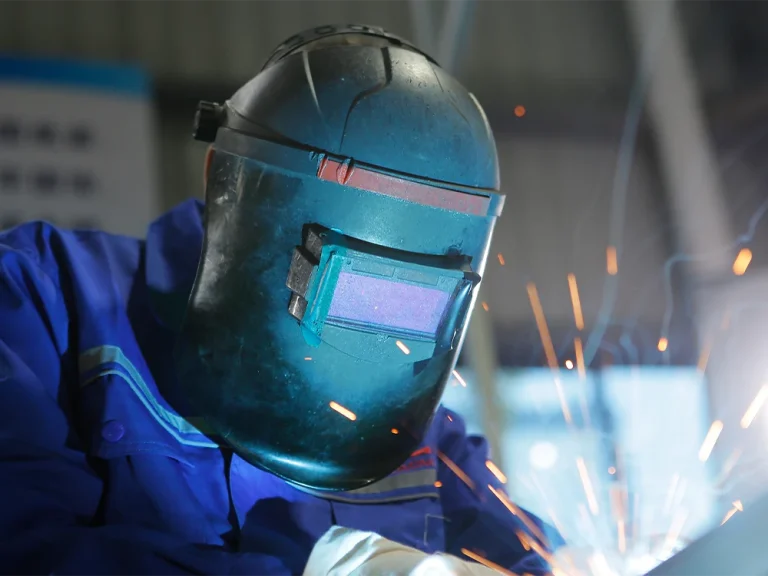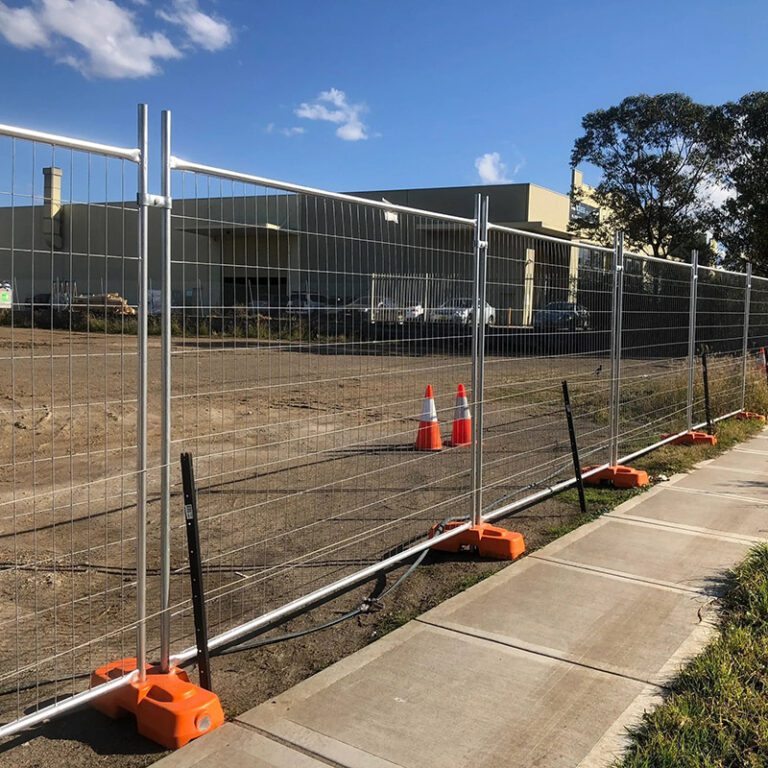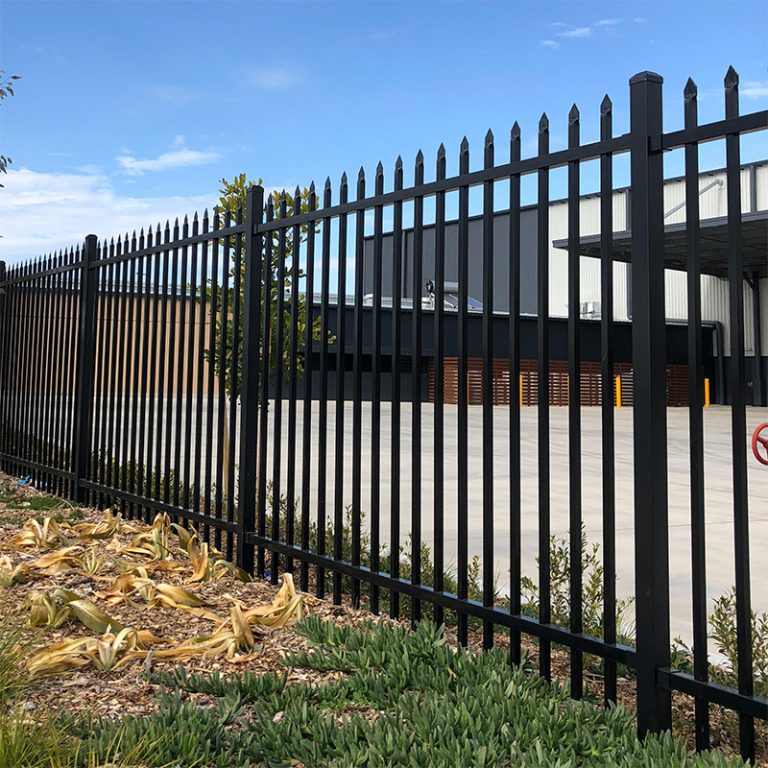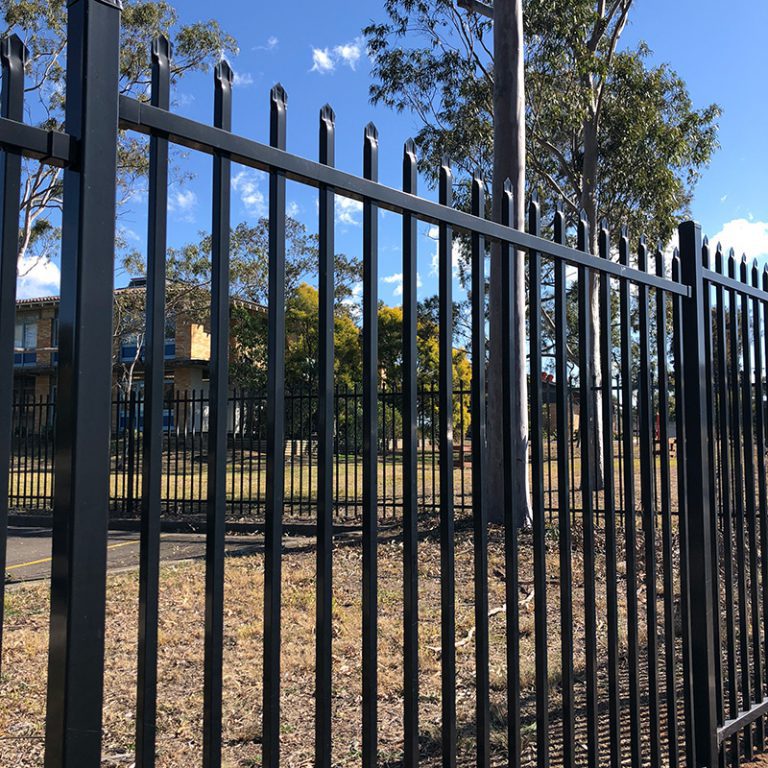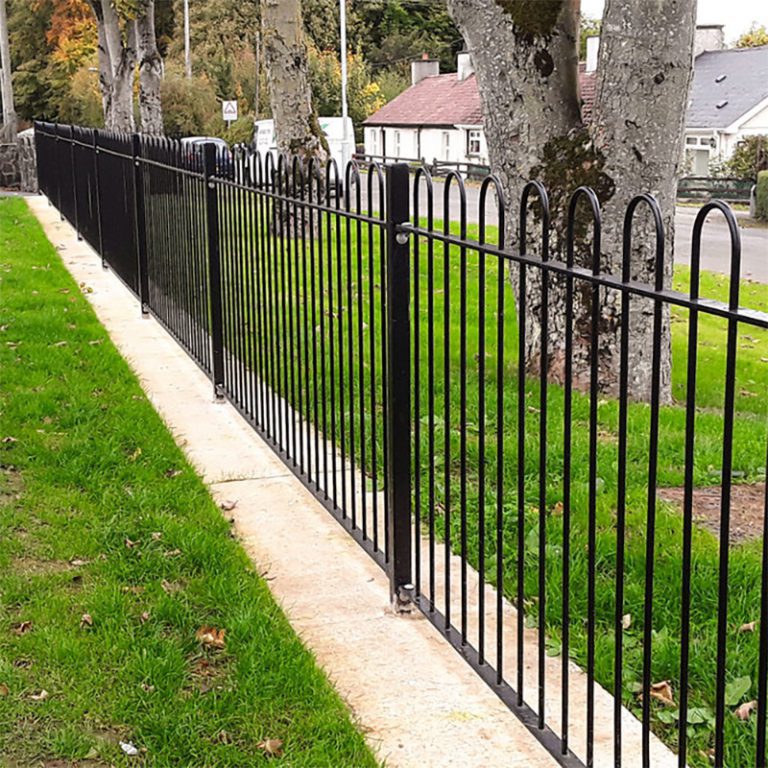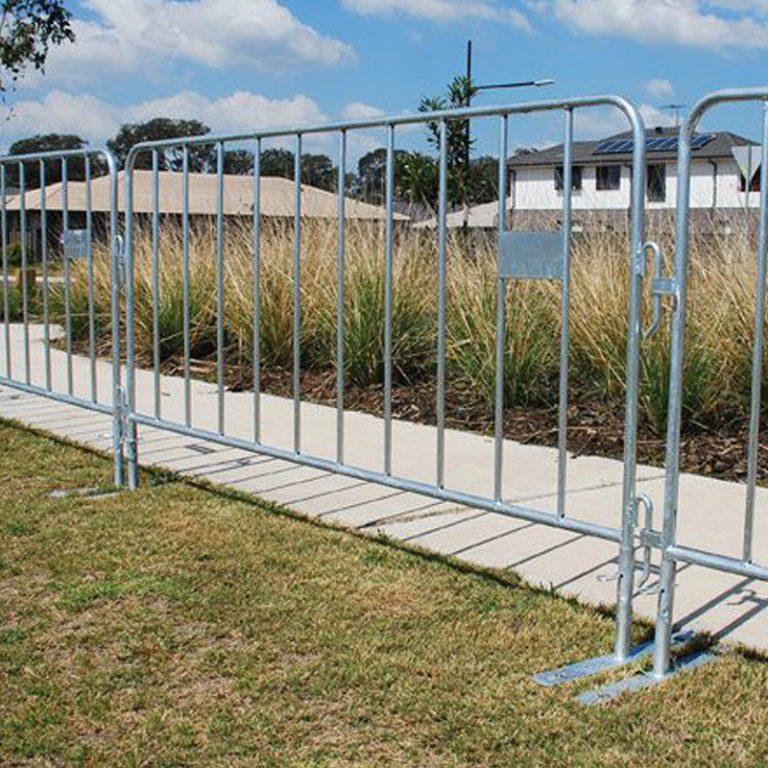In today’s world, industries are looking for more sustainable and durable ways to protect and finish products. Powder coating is one of the best solutions to meet these demands. This method of coating is widely used in industries like fencing, automotive, furniture, and construction, thanks to its environmental benefits and exceptional durability. In this article, we’ll dive deeper into what powder coating is, how it works, its benefits, and its applications, specifically for fences.
Definition of Powder Coating
Powder coating is a dry finishing process that uses a powdered form of paint to coat a surface. Unlike traditional liquid paints, powder coatings are made of finely ground pigment and resin particles that are electrostatically applied to a surface, usually metal. After applying the powder, it is cured in an oven, where heat causes the powder to melt, form a uniform coating, and harden into a durable finish.
Powder coating is typically used on metal surfaces such as fences, metal furniture, and automotive parts, but it can also be used on other materials like plastics. The process results in a thick, durable, and attractive coating that is resistant to chipping, scratching, and fading, making it ideal for both decorative and functional purposes.
The Powder Coating Process
The powder coating process is quite different from traditional painting, involving several key steps to achieve a perfect finish. Here’s how it works:
1. Surface Preparation:
• Cleaning: The surface must be free of grease, oil, rust, and old paint. Methods like sandblasting, chemical washing (e.g., alkaline cleaners), or mechanical abrasion are used.
• Pre-Treatment: For metals, a phosphate coating or chromate conversion layer is often applied to improve adhesion and corrosion resistance.
2. Applying the Powder:
- Electrostatic Spray Guns: The powder is charged with an electrostatic charge (usually positive) as it exits the gun. The workpiece is grounded, creating an attraction that ensures the powder sticks evenly.
- Fluidized Bed Dipping: For smaller parts, objects can be preheated and dipped into a fluidized bed of powder, which melts and coats the surface upon contact.
3. Curing the Coating:
- The coated object is baked in a curing oven at temperatures between 160°C and 200°C (320°F–392°F).
- During curing, the powder particles melt, flow together, and chemically cross-link (for thermoset powders) to form a solid, non-porous layer.
- UV-curable powders skip the oven and harden almost instantly under ultraviolet light, ideal for heat-sensitive materials.
Why Choose Powder Coating?
Powder coating offers many advantages over traditional paint and other coating methods. Here are some of the key benefits:
Durability:
Powder coating creates a hard, thick finish that is resistant to chipping, scratching, and fading. This makes it ideal for items exposed to outdoor conditions, such as fences, outdoor furniture, and automotive parts.
Environmentally Friendly:
One of the major advantages of powder coating is that it’s environmentally friendly. Unlike traditional paint, which contains solvents that release harmful volatile organic compounds (VOCs) into the air, powder coating contains no solvents and produces minimal waste. This makes it a greener option for manufacturers and helps companies meet sustainability goals.
Cost-Effective:
While the initial setup for powder coating may be higher than traditional painting, it is more cost-effective in the long run. The process produces less waste, and the finish is durable, reducing the need for frequent touch-ups or re-coating. Additionally, any overspray from the powder can be collected and reused, further reducing material waste.
Aesthetic Flexibility:
Powder coating offers a wide range of colors and finishes, including matte, glossy, textured, and even metallic options. This allows manufacturers to create visually appealing products that can be customized to meet specific design requirements, making it perfect for fences, furniture, and more.
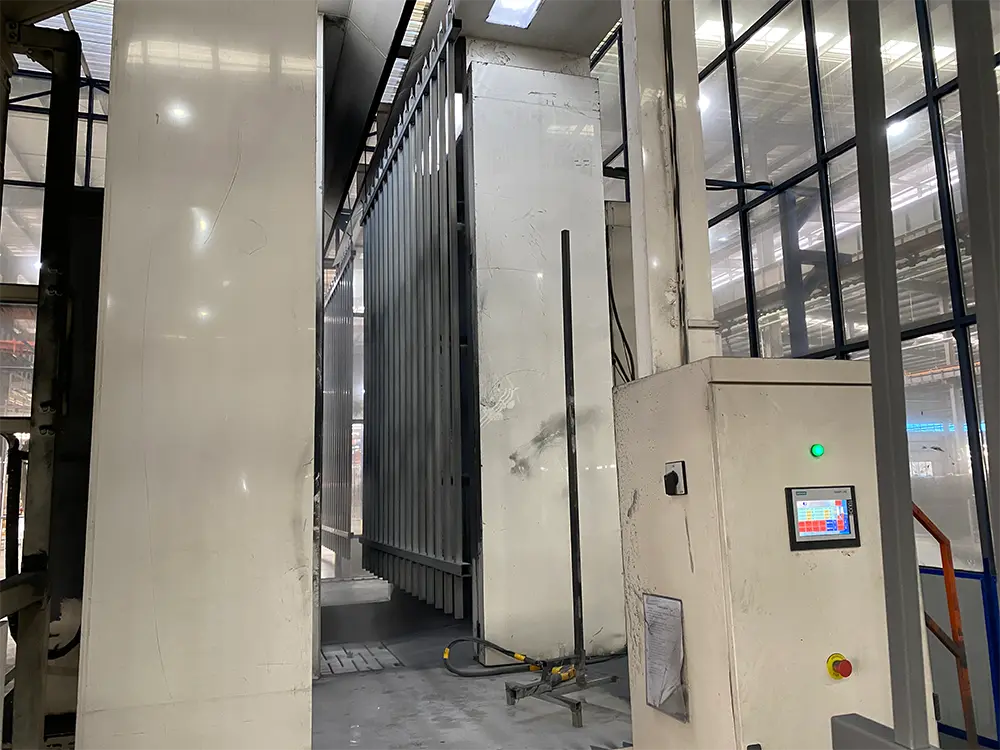
Types of Powder Coatings
Powder coatings come in several different types, each with its unique properties. The three most common types are:
1. Thermoset Powders
Thermoset powders undergo a chemical reaction when heated, which causes them to harden permanently. Once cured, these coatings cannot be remelted or reshaped. Thermoset powder coatings are known for their exceptional durability and resistance to heat, chemicals, and wear.
- Common Uses: Automotive parts, appliances (ovens, refrigerators), and industrial machinery.
- Materials: Epoxy, polyester, and acrylic resins.
2. Thermoplastic Powders
Unlike thermoset powders, thermoplastic powders do not undergo a chemical change during the curing process. Instead, they melt and flow when heated, and then harden upon cooling. These coatings can be remolded or recycled, making them more flexible than thermoset coatings.
- Common Uses: Wire coatings, playground equipment, and dishwasher racks.
- Materials: Nylon, PVC, and polyethylene.
3. Hybrid and Specialty Powders
A newer development in the powder coating industry is UV-curable powder coatings. Instead of using heat to cure the powder, ultraviolet (UV) light is used. This curing process is faster and more energy-efficient, making it a great option for industries looking to reduce energy consumption and speed up production times.
- Anti-Graffiti: Easy-to-clean surfaces for public infrastructure.
- Anti-Corrosive: Enhanced protection for marine or chemical environments.
- Heat-Resistant: For engine components or BBQ grills.
Applications of Powder Coating
Powder coating is widely used across several industries, providing both functional and decorative finishes for a variety of products. Some common applications include:
- Fencing: Powder coating is especially popular for fences. Whether it’s palisade fencing, security fences, or decorative garden fences, powder coating offers a durable, weather-resistant finish that helps extend the lifespan of the fence. It also provides a sleek, attractive look, available in a wide range of colors and finishes.
- Automotive Industry: The automotive industry uses powder coating to coat car parts like wheels, bumpers, and frames. The durable finish ensures that parts can withstand harsh weather conditions, road debris, and chemicals.
- Furniture: Outdoor furniture, including chairs, tables, and benches, benefits from powder coating as it helps resist corrosion, wear, and fading. The ability to customize finishes also allows manufacturers to create stylish designs.
- Appliances: Household appliances such as refrigerators, washing machines, and microwaves often have powder-coated finishes to improve their appearance and durability. This helps protect the appliances from scratches and environmental damage.
- Construction: Powder coating is used for architectural elements such as window frames, doors, and railings. It helps protect these components from weathering and enhances their aesthetic appeal.
Process Requirements for Powder Coating
To achieve a durable, uniform, and defect-free finish, the powder coating process demands strict adherence to specific requirements. Below is a breakdown of the critical steps and considerations, combining concise explanations with actionable checklists.
1. Surface Preparation
Proper surface preparation is the foundation of a successful powder coating application. Contaminants like oils, rust, or dirt can compromise adhesion, leading to peeling or uneven finishes.
Cleaning Methods:
- Sandblasting: Removes rust, mill scale, and debris while creating a slightly rough texture (2–3 mils roughness) to enhance powder adhesion.
- Phosphating: Applies a phosphate layer to metals (e.g., steel) for improved corrosion resistance.
- Chemical Cleaning: Uses alkaline or acidic solutions to dissolve oils, grease, and organic residues.
- Final Inspection: Ensure surfaces are completely dry and free of fingerprints, dust, or residues before coating.
Why It Matters:
Poor preparation causes defects like pinholes, bubbles, or premature coating failure.
2. Application Environment
The environment must be tightly controlled to prevent contamination and ensure consistent results.
Optimal Conditions:
- Temperature: Maintain between 20°C–25°C (68°F–77°F) to avoid powder clumping or premature curing.
- Humidity: Keep below 60% to prevent moisture absorption, which disrupts powder flow during curing.
- Air Quality: Use a dedicated spray booth with HEPA filters to eliminate dust and airborne particles.
Best Practices:
- Ground workpieces properly to maximize electrostatic adhesion.
- Regularly clean the spray booth floor and walls to prevent cross-contamination.
3. Proper Curing
Curing transforms the powder into a hard, durable finish. Precise temperature and timing are critical.
Temperature Range:
- Standard Powders: 180°C–200°C (356°F–392°F).
- UV-Curable Powders: Cure instantly under UV light (no oven required).
- Curing Time: 10–20 minutes for most thermoset powders; adjust based on substrate thickness.
Common Issues:
- Under-Curing: Results in a soft, tacky finish prone to scratches.
- Over-Curing: Causes brittleness, discoloration, or loss of gloss.
Pro Tip:
Use infrared thermometers or oven probes to verify temperature uniformity.
4. Equipment Maintenance
Regular maintenance ensures equipment operates efficiently and reduces defects.
Daily Tasks:
- Clean spray guns, nozzles, and hoses to prevent clogging.
- Inspect hoppers for residual powder or moisture.
Weekly/Monthly Tasks:
- Calibrate curing ovens to ensure accurate temperature control.
- Check airflow systems in spray booths and ovens for consistency.
- Replace worn gun components (e.g., electrodes, tips).
Why It Matters:
Neglected equipment leads to uneven application, contamination, or curing defects.
Other Considerations in Powder Coating
- Thickness of the Coating:
The thickness of the powder coating must be monitored and controlled. Too thin a coating can lead to inadequate surface coverage and protection, while too thick a coating might result in surface irregularities and wasted material. - Color Consistency:
Achieving consistent color and finish across different batches can be challenging. It requires precise control over the pigment and resin composition in the powder, as well as consistent application and curing processes. - Safety Measures:
Powder coatings are generally safer to handle than liquid coatings due to the absence of volatile organic compounds. However, safety measures must still be observed to handle the powders safely, preventing inhalation and contact with skin. - Economic Considerations:
While powder coatings are cost-effective in the long run due to their durability and minimal waste, the initial setup costs for equipment and facility preparation can be significant. Businesses must plan and budget accordingly. - Training and Expertise:
Effective powder coating requires skilled operators who understand the nuances of the process. Ongoing training and development are essential to maintain high standards of quality.
Why Choose Powder Coating for Fences?
When selecting a finish for fences, powder coating stands out as a superior choice for residential, commercial, and industrial applications. Here’s why it’s the go-to solution for both security and style:
1. Enhanced Durability & Security
- Rust and Corrosion Resistance: Powder coated fences form a protective barrier against rain, humidity, and salt spray, preventing rust and structural degradation. This is especially critical for security fences exposed to harsh weather or coastal environments.
- Impact Resistance: The cured coating is tougher than traditional paint, resisting scratches, dents, and vandalism. This durability ensures fences remain intact and functional for years, even in high-traffic areas.
- Long-Term Performance: Unlike liquid paints that chip or peel, powder coatings bond chemically to the metal, maintaining their integrity through temperature fluctuations and UV exposure.
2. Aesthetic Flexibility
- Customizable Finishes: Choose from a vast range of colors (e.g., matte black, metallic bronze) and textures (smooth, hammered, or textured) to match your property’s architecture or branding.
- Uniform Coverage: The electrostatic application ensures even coverage on intricate designs, like ornamental wrought iron or modern horizontal slat fences.
- Fade Resistance: Advanced pigments in powder coatings retain their vibrancy over time, unlike painted fences that often fade or yellow.
3. Low Maintenance
- Easy Cleaning: Powder-coated fences require only occasional washing with mild soap and water to remove dirt or grime. No sanding, repainting, or sealing is needed.
- Cost Savings: Reduced upkeep means lower long-term expenses. You won’t face recurring costs for touch-ups or rust treatments.
- Eco-Friendly: With no solvents or VOCs, powder coating is safer for the environment and ideal for homes, schools, or parks.
Practical Applications
- Security Fences: Ideal for high-risk areas (e.g., prisons, factories) where durability and tamper resistance are non-negotiable.
- Residential Fences: Enhance curb appeal for garden gates, pool enclosures, or privacy screens.
- Decorative Fencing: Perfect for historic properties or modern landscapes seeking a polished, custom look.

